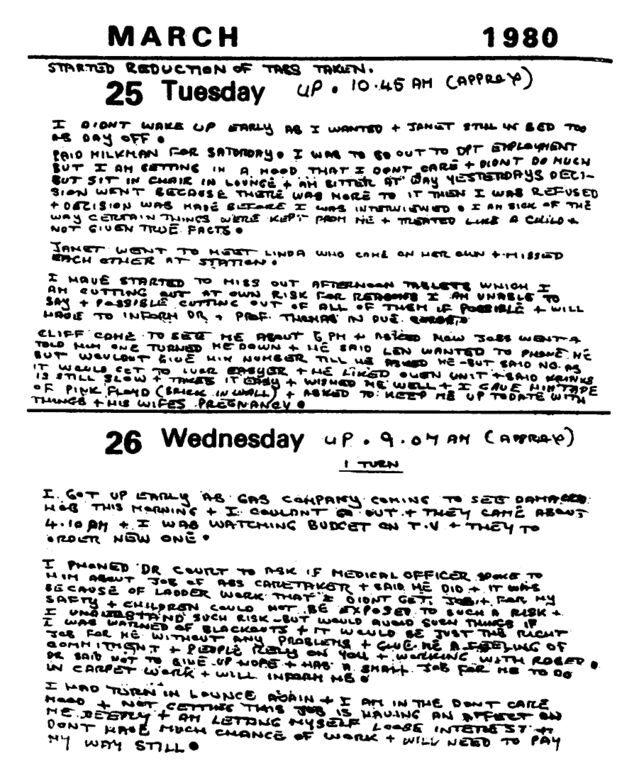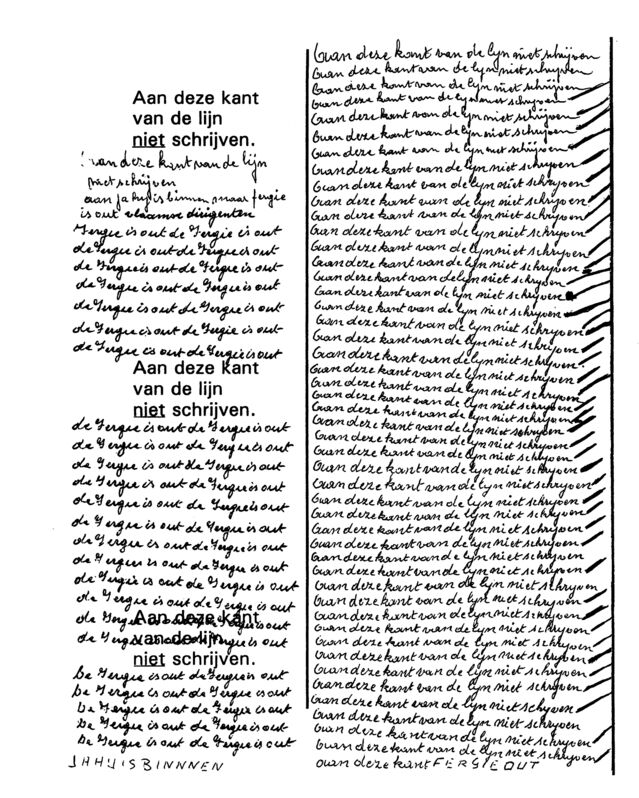Nootropics
Hypergraphia: A Neglected Sign in Neurology?
A compulsion to write can occasionally indicate brain dysfunction.
Posted January 25, 2022 Reviewed by Michelle Quirk
Key points
- Brain disease commonly impairs the capacity to write. Less well-recognised and frequently overlooked is an increase in writing activity.
- There are three distinct types of pathological excessive writing due to temporal lobe, frontal lobe, or limbic dysfunction.
- The Gastaut-Geschwind syndrome is a group of behaviours including compulsive writing evident in a few people with temporal lobe epilepsy.
- Asking patients to write a handwritten letter describing their symptoms can be diagnostically informative in neurology and psychiatry
In a few people with temporal lobe abnormalities, there is an outpouring of written material. These individuals have a drive to record facts and memories through writing in as precise and objective a way as possible, and what they write carries deep significance for them. Their script is highly stylised, meticulous, and elaborate, and its content sometimes has moral and religious overtones. Ear worms and ciphers are also sometimes incorporated into the text. The size of the letters is uniform with regular spacing. The use of capital letters and underlining for emphasis may be striking, and there are sometimes exuberant annotations filling the margins. Mirror writing, neologisms and coloured inks are sometimes used. The writing has a compulsive quality and provides little relief and no pleasure.
The diary entry from a 30-year-old man who developed temporal lobe epilepsy after an attack of measles encephalitis during infancy demonstrates the characteristic features of neatness and attention to detail:

Although people with temporal lobe epilepsy do not have a particular personality, a small number do have a cluster of unusual behaviours which include a compulsion to write. These individuals have a great interest in the cosmic and supernatural and may feel they are on a messianic mission to save the world. Their conversation is pedantic and full of circumlocutions, which results in difficulties in concise communication and problems in concluding conversations. An associated "stickiness" of thought also makes it hard for them to let go of a topic of interest. Some get into difficulties with the law because of explosive aggressive outbursts. This constellation of behaviours which also includes a reduced libido has been named the Gastaut-Geschwind syndrome and is commoner in people with temporal lobe epilepsy than one would expect by chance. Occasionally the interictal behavioural abnormality comes to medical attention before abnormal spike activity has been found on electroencephalography ( more commonly in the right than left temporal lobe).
The writing below shows the religious preoccupations of a young man with temporal lobe epilepsy who required removal of part of his left temporal lobe to control his fits and who was one of the patients first described by Geschwind and Waxman in 1974:

There is a second even rarer form of excessive writing that has been seen in patients with lesions in their prefrontal lobes due to strokes, tumours or neurodegenerative disease. These people are often inert and lack spontaneity but will often write down whatever their eyes or ears settle on in their immediate surroundings. The writing is mechanical and unlike temporal lobe hypergraphia holds no personal significance. Some of these patients will begin writing as soon as they are given a pen and paper and continue until the writing materials are forcibly removed. The script is untidy and riddled with spelling, punctuation, and grammar errors. An example of this type of automatic writing belonging to a man in his 70s with frontal lobe damage is shown below. It illustrates the perseverative "stuck in set" nature of the script and the patient's inability to adhere to written instructions that are requesting him not to write in the large margin on the left hand side of the page. Some of these patients also exhibit other frontal lobe signs such as imitation behaviour and it has been suggested that the excessive writing may be a utilisation behaviour as first described by Lhermitte and due to environmental dependency resulting from prefrontal lobe dysfunction

Recently, a third type of pathological excessive writing has been recognised in a few people with Parkinson’s disease taking L-DOPA medication . A patient of mine who had written two highly acclaimed novels in his youth began writing again after many years and produced four novels in quick succession, all of which were considered substandard by his publisher. He explained to me that it was as if the novels wrote themselves, and he had little control over the process. Another patient on L-DOPA began for the first time in his life to keep a copious diary in which he recorded in the minutest of detail the most mundane of happenings. In the accompanying figure adapted from his diary written in Serbo-Croat, it should be noted that on treatment his writing does not have the characteristic small cramped appearance of someone with Parkinson’s disease but has a uniformity of script reminiscent of many cases of temporal lobe hypergraphia. This type of excessive writing behaviour is considered to be a type of punding, a repetitive stereotyped behaviour first described in intravenous amphetamine addicts and thought to be due to increased dopamine release in the ventral striatum and limbic system.

There are some other fascinating writing abnormalities which are occasionally encountered in neurological practice
Automatic writing in which a person in a dissociated trance produces a coherent but involuntary narrative in a script entirely different form her own and which is sometimes employed for clairvoyance by mediums is now uncommon. .
Graphorrhea is a term sometimes used to describe long and sometimes grandiose lists written by people with acute mania. Schizophrenic writing can sometimes be recognised by its dysfluency, the presence of interlarded neologisms, clang associations and word salads and the greater use of third person plural pronouns and fewer first person pronouns.
La maladie du petit paper. where people write lists of their multiple symptoms, and insist on going through each one in detail is now little more than a fond memory for most neurologists, as the slips of hand-written paper that were once pulled out of pockets and handbags have been replaced by pages of computer printouts carried in a briefcase.
Georges Simenon, the creator of Inspector Maigret, wrote 80 pages a day in his early years and the science fiction writer Isaac Asimov had completed 477 books by the time of his death. Jack Kerouac, fuelled by a heady cocktail of caffeine, nicotine, and Benzedrine (dl-amphetamine), wrote On the Road on a continuous 120 feet roll of paper in three weeks. This text produced without paragraphs or margins is typical of the genre of spontaneous prose with its de-emphasis on revision, limited punctuation, and long sentences. These literary achievements are not pathological and are the antithesis of writer’s block, although there has been speculation as to whether the novels of Dostoevsky and Flaubert owed anything to their temporal lobe epilepsy.
Spontaneous writing provides insight into a person's thought processes, as well as a valuable record. For inpatients, when it seems appropriate, I tactfully enquire whether the notebooks and handwritten papers at the bedside are literary or epistolary, and often ask about reading habits. I don’t see this as prying, but part of doing my job.
References
Waxman, S.G., Geschwind, N. Hypergraphia in temporal lobe epilepsy. Neurology. 1974;24(7):629–636.
Roberts, J.K., Robertson, M.M., Trimble, M.R. The lateralising significance of hypergraphia in temporal lobe epilepsy. J Neurol Neurosurg Psychiatry. 1982;45(2):131–138.
van Vugt, P., Paquier, P., Kees, L., Cras, P. Increased writing activity in neurological conditions: a review and clinical study. Journal of Neurology, Neurosurgery, and Psychiatry. 1996;61:510–514.
Miwa, H., Kondo, T. Increased writing activity in Parkinson's disease: a punding-like behavior? Parkinsonism Relat Disord. 2005;11(5):323–325.
Source: Professor Steve Waxman Generous used with permission

